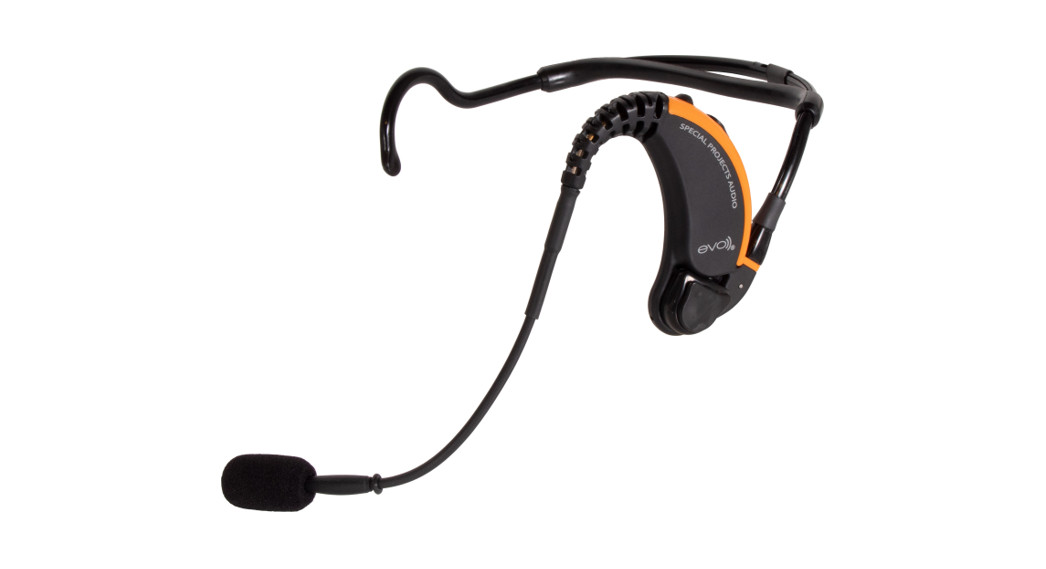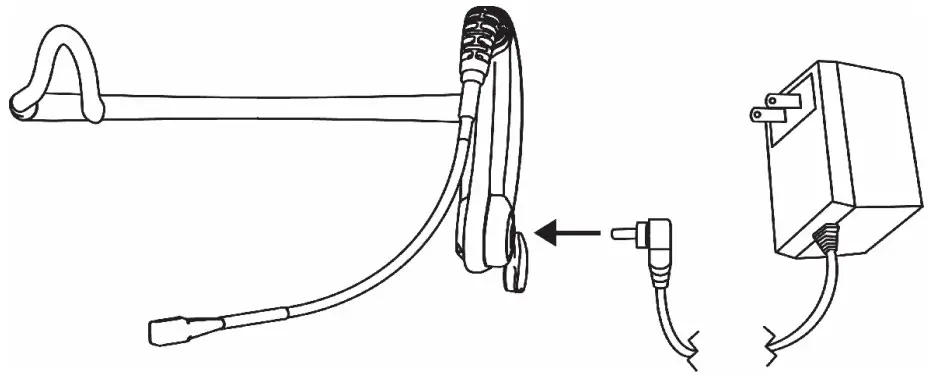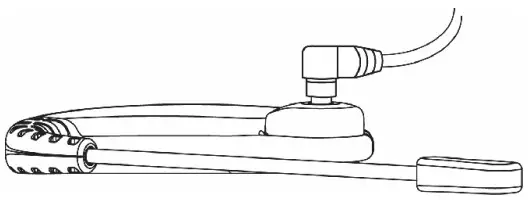
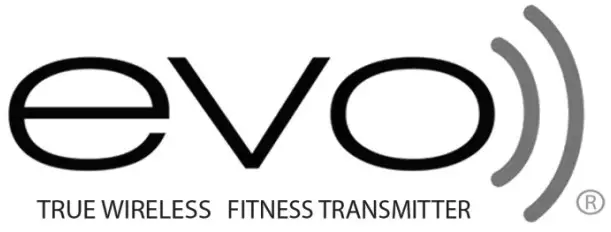 USER MANUAL
USER MANUAL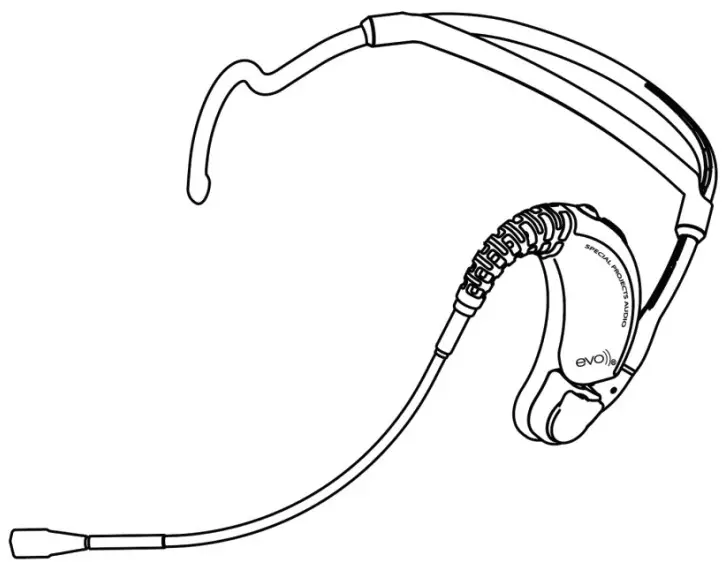

Special Projects EVO True Wireless Fitness TransmitterAnswer Audio Scan16 Professional UHF Receiver
FCC STATEMENTThis device complies with part 74, Subpart H of the FCC rules. Operation is subject to the following two conditions: ( 1 )This device may not cause harmful interference and ( 2 ) This device must accept any interference received, including interference that may cause undesired operation Notice: The changes or modifications not expressly approved by the party responsible for compliance could void the user’s authority to operate the equipment.IMPORTANT NOTE: To comply with the FCC RF exposure compliance requirements, no change to the antenna or the device is permitted. Any change to the antenna or the device could result in the device exceeding the RF exposure requirements and void the user’s authority to operate the device.
Introduction
Thank you for purchasing the Scan16 Professional Wireless Microphone System featuring the EVO True Wireless Fitness Transmitter (for brevity, noted in this manual as ‘EVO’). This Patent Pending PLL synthesized wireless microphone system operates in an FCC-approved UHF band frequency with 16 selectable channels. Please read this instruction manual carefully before operating the system. This manual covers the function and operation of the wireless microphone system.
Safety
- While the EVO transmitter is water-resistant, the SP-25R receiver is not. Please observe these safety precautions.● Do not spill liquid on the receiver and do not drop either unit.● Do not place the units near heat sources such as radiators, amplifiers, or etc.● Do not expose it to direct sunlight, extremely dusty conditions, excessive moisture, or vibration.
Environment
- Do not throw used electronics into a fire or garbage bin with domestic rubbish. Be sure to dispose of used batteries in accordance with local waste disposal rules.
- When disposing of the equipment, remove the batteries, separate the case, circuit boards, and cables, and dispose of all components in accordance with local waste disposal rules. But really, we know you will not throw this away, we just are required to include a statement on the environment.
Wireless Notes
- Before setting up, make sure that the transmitter and receiver are tuned to the same frequency.
- Do not use two transmitters tuned to the same frequency.
- Always operate your system with a fully charged battery.
- Set the MIC/LINE switch on the rear of the receiver to adjust the receiver output level to match the input level requirements of an audio mixer or amplifier.
- While checking sound, move the transmitter around the area where you use the system to look for dead spots (the receiver loses the signal). If you find any dead spots, change the receiver position. If it does not work, avoid such places.
- To avoid interference from signal reflections, do not put the receiver too near significant metal objects and avoid obstructions between transmitter and receiver. Try to maintain a ‘line of sight’ with the receiver.
- Avoid interference from TV, radio, other wireless appliances and etc..
- Wireless systems depend on fully charged batteries. Low batteries will seriously degrade performance. Be certain to allow charge time prior to use.
- Be certain that the receiver antennas are exposed and in ‘line of sight’ with the transmitter.
Quick Start Guide
- Fully charge the EVO transmitter by connecting the charging adapter to the supplied wall plug transformer. Leave your EVO transmitter powered OFF while charging. Green LED will turn off when charged. Replace charging adapter cover before use.NOTICE – The supplied charger is designed specifically for use with the EVO True Wireless system. Use of any other charger may cause system damage and will void your warranty.
- Make audio output and power connections as described in Section 7.
- If connecting to a mixer MIC input, set the SP-25R volume to the one o’clock position. If connecting to a mixer LINE input, set the SP-25R volume to MAX position. Be sure to keep the mixer output turned down until ready to test.
- Turn on the SP-25R receiver by pressing the POWER button for 2 seconds.
- Select operating channel:■ Auto-scan selection: Press SET for 3 seconds to search for the next interference-free channel. Channel display will stop flashing when the channel is locked in.■ Manual selection: Press SET for 1 second, channel display will flash. Press the up/down arrows to select a channel. Press SET quickly to lock the channel in.
- Turn on your EVO transmitter and select the matching channel. Note the below table describing the channels! Note that position 0 indicates channel 16. See Section 7 for details. Also – be sure to watch the receiver RF meter for activity as you select the transmitter channel, as described in the next step. If the RF meter lights are fully on one switch position, you have likely found the correct channel.
| EVO Transmitter Switch | Actual Channel | EVO Transmitter Switch | Actual Channel |
| 1 | 1 | 9 | 9 |
| 2 | 2 | A | 10 |
| 3 | 3 | B | 11 |
| 4 | 4 | C | 12 |
| 5 | 5 | D | 13 |
| 6 | 6 | E | 14 |
| 7 | 7 | F | 15 |
| 8 | 8 | 0 | 16 |
- After selecting the transmitter and receiver to the same frequency, the RF LED on the SP-25R front panel will display light up.
- Slowly raise your mixer volume to test. The dot on the mic indicates the speaker side.
- If setting up additional systems, leave the first transmitter on when using Auto Scan selection – this way, the second receiver will ‘see’ the first transmitter and avoid that channel. Follow similarly if setting up additional systems.
- Go forth and be truly wireless!
Product Description
Receiver
The SP-25R receiver is designed for use only with Answer Audio / Special Projects 16channel selectable channel transmitters. The receiver operates in the UHF 540-570 MHz frequency band with PLL synthesized control.
- Power: Press for 2 seconds to power the receiver on or off.
- Channel Display: LED channel displays the channel number.
- Button△: When the LED display starts flashing, press this button to change the channel forward.
- Button▽ : When the LED display starts flashing, press this button to change the channel backward.
- Set / Scan Button:● Auto Scan: Press 3 seconds to search to the next clear channel automatically.OR● Manual Channel Set: Press 1 second, LED display will flash. Press the channel button or△ to change the channel. Wait for the LED channel display to flash five times to lock the▽ channel or press the SET button for 1 second to lock the channel.
- RF Indicator: LED will light red when the wireless signal is received.
- AF Indicator: LED will light green when an audio signal is received.
- Volume Control: Use this rotary control to adjust the receiver output level to match the input sensitivity of an audio mixer or an amplifier.
- Antenna: Fixed-length UHF antenna, removable. Remote mounting kit available.
- Antenna Position Adjust: For best results, position antennas pointing upward and away from each other, approximately 45 degrees from horizontal.
- Balanced Output: 3-pin XLR connector provides balanced low-impedance output.
- Unbalanced Output: Unbalanced ¼ inch mono jack audio output for connecting to an unbalanced mixer input.
- Mic/Line Switch: Select output of XLR balanced connector or ¼ in. unbalanced phone jack. It can be set for microphone (-20dB) or line-level (0dB).
- Squelch Adj. : The squelch adjusts the receiver’s sensitivity to help prevent external interference. Setting the squelch too high will reduce the range of the system. Think of it as adjusting the size of the operating area, but remember that as ‘operating area’ grows, so does possible interference. For most users, the factory setting is good.
- DC IN: DC input connector for the supplied 12VDC Power Supply.
EVO True Wireless Fitness Transmitter

- Microphone Element: Shown without the windscreen. Always be sure the side with the dot is toward the mouth. In the event that you experience a low audio level with excessive feedback, check the direction of the microphone element. DO NOT twist the element.
- Flexible Boom: Adjust so that the microphone element is at the corner or just under the mouth. To prevent feedback, the EVO uses a noise-canceling element. Mic placement is very important for a good experience. If you notice the volume ‘dip’, check to be certain the element is placed properly.
- Power On/Off Switch: Turns transmitter power on and off. Press and hold one second to power on, three seconds to power off. The LED will flash to indicate a change in power status. After powering on, LED will flash red at 4-5 second intervals to indicate the EVO is on.
- Channel Selector and Cover: Lift the cover to set the transmitter channel via the rotary selector with the included mini screwdriver. Always be certain that this cover is completely closed prior to use. Failure to do so may affect water resistance and void your warranty!
- LED Indicator: Green indicates charging, single red flash upon power ON, multiple red flashes upon power OFF.
- Adjustable Strap: The EVO headband is designed so that most users can comfortably use the system with no adjustment. If you need a more snug fit, you may slip this strap forward. Also, see (7) below.
- Recessed Antenna: Prior to use, always be certain the antenna is securely recessed into the headband. If you need to adjust the strap, be certain the antenna is still properly recessed.
- Form Fitting Headband: The EVO headband is designed for maximum comfort on most users without adjustment. See points (6) and (7) for details. The headband will flex for comfort, but don’t test its limits by spreading it wider than a human head! Really, we know someone out there will…
- Charging Connector and Cover: For use with the supplied external charging adapter. Be certain to replace the cover before use – failure to do so may void your warranty.
Setting Up
NOTICE: Prior to setting up, please check that the transmitter and receiver are tuned to the same frequency. Two or more transmitters operating on the same frequency cannot be used at the same time in the same area. For each extra transmitter, please select a different frequency that can be used simultaneously in the local area.
Connecting the receiver to power
● Plug the antennas into the BNC socket on the receiver and arrange them at approximately a 45-degree angle, pointed up.● Use only the supplied 12VDC universal power supply. Using the wrong DC adapter may cause irreparable damage to the unit.● Plug the feeder cable of the supplied DC power supply into DC IN socket on the receiver. Then plug the DC power supply into a power outlet.
Connecting the receiver to an audio mixer or an amplifier
In order to make sure of the sound quality and to avoid distortion, please adjust the volume level according to the following instructions.
- When using a standard mic cable with 3-pin XLR connectors or ¼ inch phone plugs to plug into the MIC IN on the audio mixer or on the amplifier, please turn the Volume Level Control of the receiver to around 1 o’clock position, the output level for balanced and unbalanced output is about at 77mV.
- When using a standard audio cable with 3-pin XLR connectors or ¼ inch phone plugs to plug into the LINE IN on the audio mixer or on the amplifier, please turn the Volume Level Control of the receiver to around MAX. position, the output level for balanced and unbalanced output is at 770mV.
- When selecting the MIC/LINE switch to “MIC”, please use a standard ¼ inch plug cable to connect the UNBALANCED connector on the receiver rear panel to an unbalanced MIC input on the audio mixer amplifier.
- When selecting the MIC/LINE switch to “MIC”, please use a standard 3-pin XLR cable to connect the BALANCED connector on the receiver rear panel to a balanced MIC input on the mixer or amplifier.
- When selecting the MIC/LINE switch to “LINE”, please use a standard ¼ inch plug cable to connect the UNBALANCED connector on the receiver rear panel to an unbalanced line input on the audio mixer or on the amplifier. Connecting to a ‘boom box? Use this setting and connect to your stereo using a mono ¼ inch to stereo RCA adapter.
- When selecting the MIC/LINE switch to “LINE”, please use a standard 3-pin XLR cable to connect the BALANCED connector on the receiver rear panel to a balanced line input on the mixer or on the amplifier.
- Never use the balanced and unbalanced audio outputs at the same time! This may cause signal loss or increased noise.
Charging The EVO True Wireless Fitness Transmitter
NOTICE: Prior to use, it is necessary to fully charge your EVO transmitter. Initial charge from a depleted state may take up to four (4) hours or more.NOTICE: The supplied charger is designed specifically for use with the EVO True Wireless system. Use of any other charger may cause system damage and will void your warranty.
- Open the charger cover and insert the charging connector into the EVO as illustrated below. Only the supplied wall charger should be used.

- Insert the charging cable into the charging adapter as illustrated at right. Insert the cable fully.

- Connect the charging transformer to AC power (that’s ‘manual talk’ for ‘plug it into the wall’).
- Note that the EVO transmitter should be powered OFF while charging.
- GREEN LED indicates battery charging.
- GREEN LED will turn off when the battery is charged.
IMPORTANT: Close cover after charging!Failure to close the cover may affect water resistance and void your warranty. The charging connector of your EVO has an internal coating of silicone to further protect against corrosion. Carefully re-applying a small amount of the supplied silicone on a monthly basis will keep the connections protected. Part number SP-SG10, if you need more. Similarly, after selecting your operating channel, be certain that the channel selector cover is closed and secured. No silicone is needed here.
Setting the Operating Channel
NOTICE: Please keep the transmitter at least one meter away from the receiver.
Manual ModeSetting interference-free channel by manual operation.
- Press the button “Set” for 1 second to let the LED channel display flashing.
- Press button △or▽ change the channel forward or backward. It is good practice to spread your channels if possible. For example, if you are using Channel 1, skip Channel 2 when setting up a second system.
- LED display will flash five times and then lock to the selected channel.
Auto-Scan ModeSetting interference-free channel by auto-scan programmed search.
- Press the button “Set” for 3 seconds to search the next free-interference channel automatically.LED display will flash five times. The auto-scan system will stop, then lock to the next free-interference channel.
- If using multiple systems at one time, leave the first system on, and then repeat the Auto-Scan procedure for each receiver. Each subsequent receiver will scan and ‘see’ that the previous channels are in use. Don’t forget to set each transmitter accordingly.
EVO Headworn Transmitter Channel Set
Power the EVO transmitter ON by pressing the POWER button for one second.
- Open the channel selector cover and set the rotary selector to the desired channel. Note that the rotary selector is alpha-numeric. You may refer to the chart below:
Channel Selector says: Channel Selector says: 1 1 9 9 2 2 10 A 3 3 11 B 4 4 12 C 5 5 13 D 6 6 14 E 7 7 15 F 8 8 16 0 - Note that to set the transmitter to channel 16, you must use the ‘0’ setting on the rotary selector.
- When the transmitter is set to the same channel as the receiver, the receiver’s RF meter should indicate a strong signal, regardless of whether or not you are speaking into the mic.
- Be certain that the selector cover is securely closed prior to use. Failure to close the cover may affect water resistance and void your warranty.
Basic Connections
Connecting To A Sound System
Connect the receiver output to the audio mixer or amplifier input, using a standard XLR microphone cable or ¼ inch audio cable. Never use the balanced and unbalanced audio outputs at the same time! This may cause signal loss or increased noise.
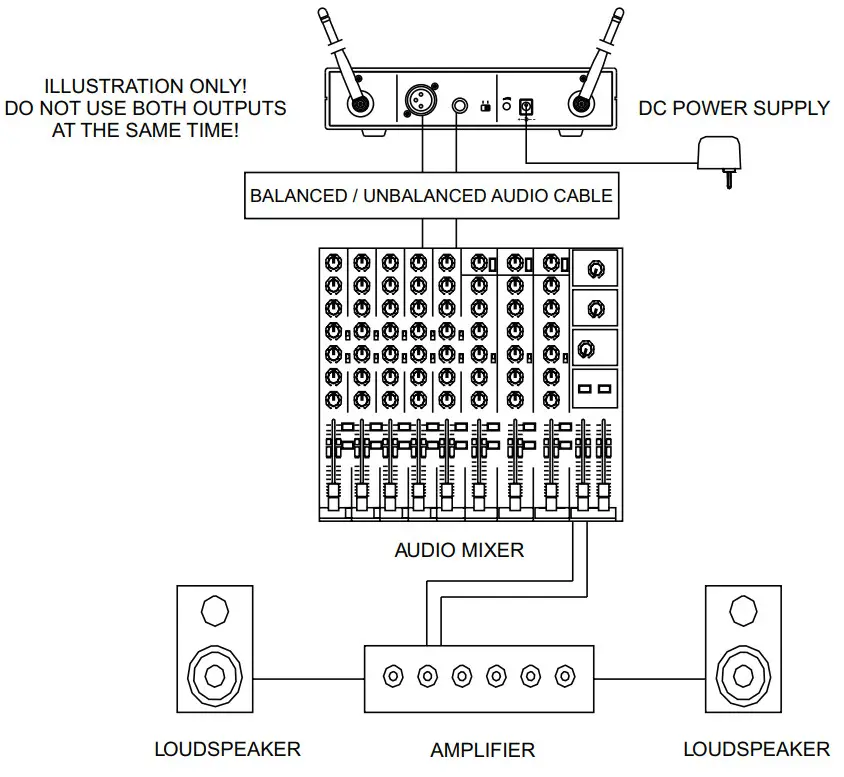
Rack mounting
To combine two receivers in a 19″ standard rack by using 2 short L-type plastic racks (L2) and 2 metal connecting plates (C1). (Each system includes L2 and C1.)Note that if you are using two systems at one time, they must operate on different channels. Refer to sections 7.4 and 7.5 for details.
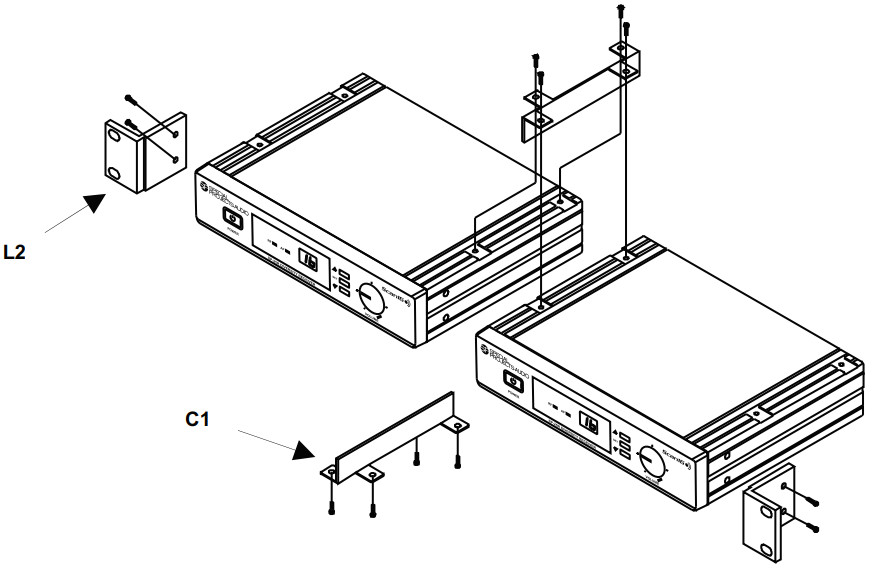 To mount a receiver in a 19” standard rack by using 2 L type long metal racks (L1).
To mount a receiver in a 19” standard rack by using 2 L type long metal racks (L1).
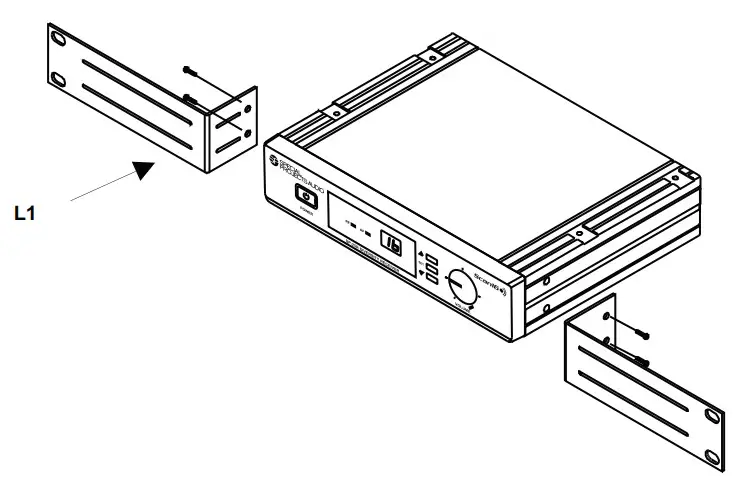
System Features
- Operates in an FCC-safe UHF frequency band – 16 operating frequencies over 6 television channels (25, 26, 27, 28, 29, 30).
- Automatically scans upward to the next open frequency at the touch of a button.
- Switching antenna diversity to ensure the reception quality and avoid dropouts.
- Super high sensitivity, extremely low noise transmission, and reception.
- A built-in recharging system eliminates battery costs.
System Specification
SP-25R Scan16 Receiver
Band : UHFFrequency Channels : 16Frequency Range : 540.125 – 569.525 MHzFrequency Stability : ±0.005%Outputs : 1 Balanced XLR, 1/4″ Unbalanced (Mic.= -20dB / Line = 0dB)Sensitivity : 8 dBμV over 80dB S/N ratioImage and Spurious Rejection : 80 dB minimumModulation : FMSignal to Noise :>94dB, at 48KHz deviation and 60dBV antenna inputFrequency Response : 80Hz to 12KHz (±3dB)T.H.D. : <1.0% (at 1KHz)Power Supply : DC 12V ~ 18VCurrent Consumption : 110mA at 3VDimensions : 13″ × 10″ × 6″ (330.2 x 330.2 x 152.4 mm)Weight : 2.75 lbs (1.247 kg)
EVO True Wireless Fitness Transmitter
Style: Hooks over both ears with a comfortable headband designBoom Length: 6″ Total – 4.5″ Flexible GooseneckMic Element: Noise-canceling, Bi-directional Condenser, IP-67 moisture, and dust ratedBand: UHFFrequency Range: 540.125 – 569.525 MHzFrequency Response : 80Hz-12kHzOperating Range: Up to 300′Battery: Lithium-Polymer Rechargeable with 4+ hours talk time, depending on useAvailable Channels: 16, user selectableInput: 5VDC 3.5mm Barrel Connector for Charging. Center +, Sleeve –LED Indicator: Power On – Blinking Red, Charging – Solid GreenRF Power Output: 7.5 mWWeight: 1.6 oz. (45 g)
Accessories
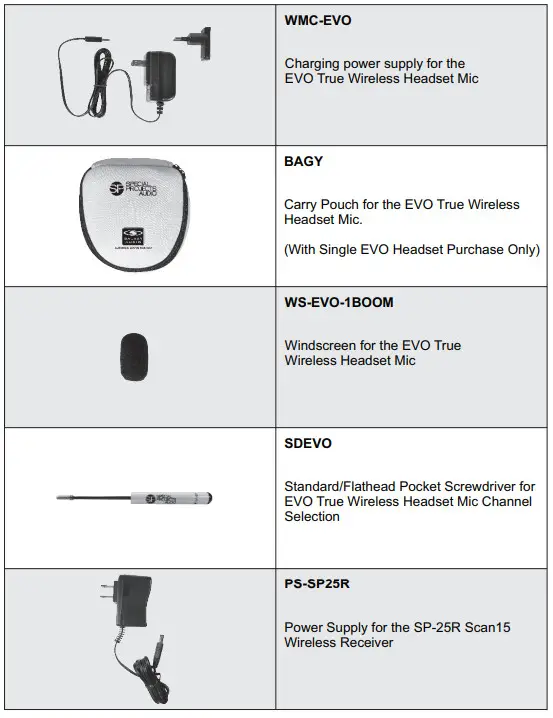
Troubleshooting
NOTICE: No matter what, make sure the EVO battery is fully charged. Many wireless system problems may be traced to low batteries.
| Symptom | Possible Solution |
| No sound | Be certain that the receiver is connected to power and both receiver and transmitter are ON.Be certain that both receiver and transmitter are set to the same frequency.Re-check all connections and levels on your PA system.Be certain that the transmitter is not out of range, or squelch is set too high. |
| Audio interference | If using two or more systems, be sure all systems are operating on different frequencies, at least two channels apart.Re-check your operating frequency by completing the Auto-scan process described in section 7.4.2.Note that interference can come from a variety of sources. If interference is experienced on multiple channels, the source is likely nearby (other electronic systems in the same building).Note that some cell phone signals are known to interfere with audio systems, regardless of operating frequency. |
| Distortion | Check the receiver’s volume control – if it is too high, it may overload your mixer’s input.Back your microphone element away from the mouth. Below the lips or to the side of the mouth are recommended positions.Check to be sure the distortion is not from your other audio equipment. |
| Diminished performance | Be certain the battery is fully charged.Be certain antennas are properly placed (see the image in Section 8.1). |
Warranty
Your EVO True Wireless Fitness System is covered for one year against defects in materials and workmanship. In the event of such defects, Galaxy Audio will repair our product free of charge unless otherwise specified in detail, or replace it with a new product of equal or greater value. This warranty excludes defects due to normal wear, shipping damages or failure to use products according to instructions for proper use. Failure or damage due to abuse or misuse is specifically the responsibility of the user and cannot be covered by warranty. This warranty is void in the event of unauthorized repairs or modifications not made by Galaxy Audio. Any attempt to open or service any component of your wireless system will void this warranty. If you have any questions, please call us at 1-316-263-2852 or contact support at: https://www.galaxyaudio.com/support

 https://galaxyaudio.com/?utm_source=QR&utm_medium=EVO-Manual&utm_campaign=EVO-Manual-Index-QR https://galaxyaudio.com/?utm_source=QR&utm_medium=EVO-Manual&utm_campaign=EVO-Manual-Index-QR |
 http://specialprojectsaudio.com/?utm_source=QR&utm_medium=EVO-Manual&utm_campaign=EVO-Manual-Index-QR http://specialprojectsaudio.com/?utm_source=QR&utm_medium=EVO-Manual&utm_campaign=EVO-Manual-Index-QR |
ONE YEAR LIMITED WARRANTYWARRANTY Information can be viewed online at https://www.galaxyaudio.com/support/warranty

EVO-25USER, MANUALUSER’S MANUALSpecifications in this manual are subject to change without notice.For the most up to date manual and informationvisit www.galaxyaudio.com.1-800-369-7768 www.galaxyaudio.com© Copyright Galaxy Audio 2021
References
[xyz-ips snippet=”download-snippet”]

